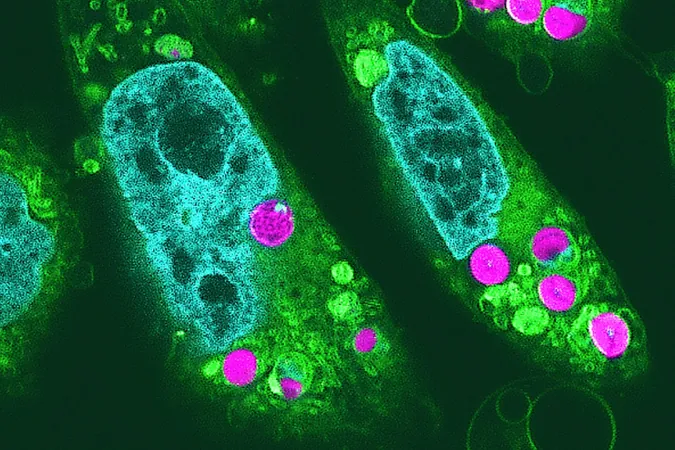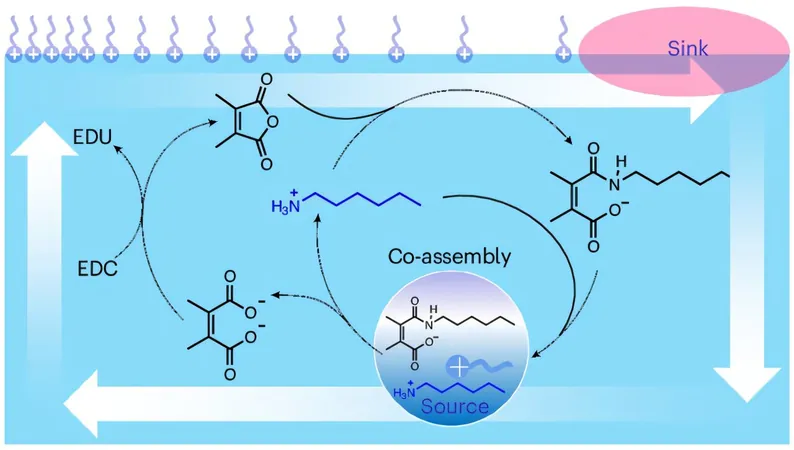
Revolutionary Breakthrough: Scientists Create Solar-Powered Hamster Cells!
2024-11-17
Author: Amelia
Revolutionary Breakthrough: Scientists Create Solar-Powered Hamster Cells!
Imagine if you could recharge your energy levels just by soaking up the sun! This dream is becoming a reality, thanks to groundbreaking research from Japan, where scientists have ingeniously transformed hamster cells into solar-powered entities with photosynthetic capabilities.
Traditionally, photosynthesis—the process by which plants and algae convert sunlight, carbon dioxide (CO2), and water into energy and oxygen—has been reserved for the plant kingdom. However, a pioneering team of biologists led by researchers at the University of Tokyo has successfully introduced chloroplasts (the cell structures responsible for photosynthesis) from red algae into hamster cells. This novel combination allows these animal cells to harness sunlight and produce their own energy, a remarkable feat never documented before.
According to co-author Sachihiro Matsunaga, "As far as we know, this is the first reported detection of photosynthetic electron transport in chloroplasts implanted in animal cells." This critical phase of photosynthesis is essential for energy production, and the team was astounded to observe that the chloroplasts not only survived within the hamster cells but continued functioning for up to two days, creating energy through natural light.
Using advanced imaging techniques and light pulse methods, the team confirmed that these chloroplasts were indeed active, allowing the hamster cells to produce not just oxygen but also a carbon source, leading to an increase in their growth rate. Matsunaga elaborated, “By integrating chloroplast-implanted cells, we could enhance oxygen supply through photosynthesis, improving tissue growth conditions.”
This innovative technology paves the way for a future where lab-grown tissues—like artificial organs and skin grafts—might thrive better with the addition of these "planimals." By addressing issues stemming from low oxygen levels in dense tissue structures, the introduction of photosynthetic animal cells could revolutionize tissue engineering. No longer hindered by hypoxia, these engineered tissues could grow larger and more efficiently.
The implications of this research extend beyond mere scientific curiosity; if successful, it could lead to significant advancements in regenerative medicine and sustainable biomanufacturing. Imagine a world where our lab-grown meats and organs not only provide food and healing but also contribute to environmental sustainability through photosynthesis.
The research team is enthusiastic about continuing their exploration of these versatile "planimal" cells. While we might not see solar-powered pets just yet, the notion of using living organisms that can sustain themselves through sunlight is an exciting glimpse into the future of biotechnology and environmental harmony. Who knows? Soon, our homes might be filled with small creatures that can share our sunlight while enhancing their surroundings!









 Brasil (PT)
Brasil (PT)
 Canada (EN)
Canada (EN)
 Chile (ES)
Chile (ES)
 España (ES)
España (ES)
 France (FR)
France (FR)
 Hong Kong (EN)
Hong Kong (EN)
 Italia (IT)
Italia (IT)
 日本 (JA)
日本 (JA)
 Magyarország (HU)
Magyarország (HU)
 Norge (NO)
Norge (NO)
 Polska (PL)
Polska (PL)
 Schweiz (DE)
Schweiz (DE)
 Singapore (EN)
Singapore (EN)
 Sverige (SV)
Sverige (SV)
 Suomi (FI)
Suomi (FI)
 Türkiye (TR)
Türkiye (TR)